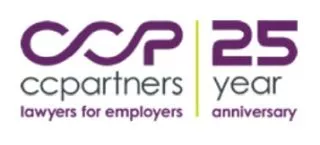A recent New Brunswick Court of Appeal decision underlined the significance of alleging cause at the time of the termination, not after.
Facts
The plaintiff employee had been employed by the defendant employer, RTO Asset Management (“RTO”) for nearly thirty (30) years, most recently as a Regional Manager. The trouble began in May 2017, when RTO was made aware that the plaintiff and a direct report were involved in a romantic/sexual affair. The direct report had been hired by the plaintiff in January 2016 and subsequently, promoted by him to the position of Store Manager, shortly thereafter.
Upon further investigation by RTO, a troubling set of facts regarding the plaintiff's misconduct came to light, including:
- He had continued to supervise the employee for more than twelve (12) months while engaged in the relationship;
- He had failed to report the relationship, as he was required to do;
- He had given the employee advice based on inside information; and
- He had made recommendations to RTO based on his desire to benefit the employee.
Making matters worse, the plaintiff initially lied when questioned about the affair. It was only after he was confronted and made aware of the direct report's admission that he divulged his participation.
Based on a review of the facts presented by RTO, including the aforementioned investigation findings, the defendant likely had a justified position to terminate the plaintiff's employment for cause. While RTO initially turned their mind to a cause termination at this juncture, they instead opted to explore a more strategic approach to his termination.
Ultimately, RTO met with the plaintiff and provided him with a termination letter indicating:
“Without prejudice to our ability to take the position that your employment has been terminated for just cause, the Company has decided to terminate your employment, effective immediately, on a without cause basis.”
RTO subsequently offered the plaintiff a “Transition Package” under which he would have been provided an all-inclusive package amounting to three (3) months' notice (i.e. equivalent to roughly 0.4 weeks per year of service, inclusive of his minimums).
The plaintiff rejected this offer and proceeded to commence a legal action against RTO. In response, RTO backtracked and contended that the action should be dismissed because the plaintiff's employment had been justly terminated on a with cause basis.
Decision:
In their decision, the Court of Appeal scrutinized and saw through RTO's tactics. They found that RTO's reservation of the right to assert cause in the termination letter was simply designed to assert pressure on the plaintiff to accept the proposed severance package. Ultimately, the Court of Appeal found that the plaintiff's without cause termination was “free of ambiguity”.
Accordingly, a determination of the plaintiff's common law entitlements ensued and the Court of Appeal specifically noted his age (55), years of service (29.5) and the shallow pool of comparable jobs in New Brunswick before awarding him a whopping twenty-four (24) months of notice!
Key Takeaways and Termination Best Practices
This case should act as a stern reminder to approach and
carry-out terminations with extreme caution and precision. This is
especially recommended when dealing with employees who have accrued
exceptionally long service and/or have engaged in gross misconduct,
as seen in this case. As such, when approaching a termination we
recommend considering the following best
practices before
and during the termination meeting to
mitigate potential risk.
Steps to Take Before the Termination Meeting:
- Consult with Legal Counsel: First and foremost, whether an employer is only in the initial stages of considering a possible separation or ready to hit the termination button – we strongly urge employers to reach out to their legal representative. Your counsel will be able to provide you with all the options available to you, whether it be discipline, working notice or an immediate termination. Subsequently, a well-versed employment lawyer will provide with you recommended next steps to limit your liability based on a review of the most relevant case law available.
- With or Without Cause Termination: After consulting with legal counsel, employers need to think long and hard about why they will be terminating an employee before the termination meeting. This decision makes it clear that the courts will not accept a change in position once the termination has been communicated. In the case of gross and willful misconduct, if your organization has taken all reasonable steps to meet the high threshold to allege cause – we urge you to do so! The employer's decision in this case to be “strategic” and “tactical” backfired and costed the organization over $300,000 in notice and nearly $20,000 in cost awards.
- Prepare the Termination Letter: To set the termination in motion, the employer will need to prepare a comprehensive termination letter. These letters should cover off on all aspects of the termination, including, but not limited to: referencing the Employment Agreement (if applicable), clarifying the minimum notice payments required by the Ontario Employment Standards Act, 2000, the continuance of group benefits and clearly outlining the gratuitous package offered to the employee in exchange for executing the attached Full and Final Release. Nailing this aspect of your preparation is absolutely vital, as this will be the written document that may be scrutinized in future legal proceedings. As such, we recommend that employer's once again consult with legal counsel at this juncture.
Steps to Take During the Termination Meeting:
- Schedule the Termination Meeting: Employers are recommended to meet with the employee at a time when other employees are not in the office (i.e., in the early morning or after hours, etc.).
- Review the Proposed Termination Package: Employers are not recommended to read the termination package in its entirety. Rather, employers should cover-off on the salient points (i.e. what is being offered and the deadline to accept, etc.) and encourage the employee to read the letter in its entirety once the news has settled in. Further, when conducting the termination meeting, it is important to use proper verbiage and reference the proper legal phrase, “termination of employment”. Accordingly, employers must avoid using common terms such as "transition”, "layoff", or "separation", as they may confuse your intentions and cause ambiguity.
- Part Ways Amicably: An important aspect that is often overlooked is how the termination meeting is concluded. The employee should be reminded that the termination is a business, not a personal decision. Concluding the meeting with a handshake (on second thought – maybe no handshakes during the COVID-19 Pandemic!) and a genuine "thank-you" allows the employee to move on from the organization in a respectful and amicable manner.
The content of this article is intended to provide a general guide to the subject matter. Specialist advice should be sought about your specific circumstances.

